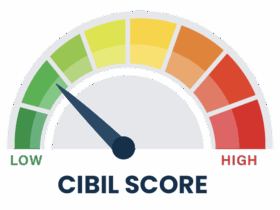Taking a step forward today, corporate treasury has evolved into its own entity. Whether it’s banks, organizations and corporations, it is almost a given to find a treasury department now rather than in the 1990s. Since the Great Financial Crisis in 2008, corporate treasurers are gaining more importance and visibility in boardrooms. However, what exactly is corporate treasury?
For the most part, corporate treasury manages the organization’s liquidity and financial risks, banking relationships, working capital and supporting management and business units. In some organisations, the treasury department may include corporate finance, corporate planning, pension funds management, economic analysis, and financial technology.
The Standard Setup of a Corporate Treasury
The Corporate Treasury department can cover a large area of responsibilities and is becoming an important part of any organisation.
Following is a breakdown of each stage:
- Standard – Contextualized and transactional, with a basic geography and product coverage.
- Advanced – Strategic planning with expertise in regional coverage.
- Leader – Exceptional management that has global coverage and a well-developed team in different functional areas that can rival banks.
Here’s how corporate treasury at different stages can add value to organizations.
- Stage 1: Reduce working capital cycle, optimize borrowing costs, ensure liquidity throughout the business value chain.
- Stage 2: Increase business margins and risk management and mitigation through hedging
- Stage 3: To unlock liquidity from idle cash, reduce the cost of financing across the value chain, notably channel and vendor interactions, and structure mergers and acquisitions
- Stage 4: Increase shareholder value through dividends and share buybacks, manage the cost of capital through banking and credit ratings
A standard corporate treasury setup will consist of the following functions:
- Cash and Liquidity Management
- Financial Risks Management (FX, Interest Rates, Commodities, etc)
- Company Capital Structure
- Working Capital Management
- Management and Business Units Support
- Long Term Funding
- Bank Relationship
- Tax and Treasury Accounting
- Company Credit Rating Management
Four Common Responsibilities of a Corporate Treasurer
Since several factors influence the responsibilities of corporate treasurers, identifying and defining a standard set of responsibilities is a challenging task.
Here are a few common areas, which indicate how treasurers in most organizations perform their duties:
- Working Capital, Cash & Liquidity Management: Managing the inventory levels is necessary to optimize the working capital. Depending on the type of business, inventory can be in the form of actual physical finished goods to semi-finished stocks. Other factors such as payment terms, supplier finance and logistics chain management do affect working capital. In most cases, the treasurer is expected to manage or provide advice as well.
- Financial Markets Risks Management: Financial markets risks come from trading services, and enterprise risks come from factors outside of financial markets. A few instances are reputation risks (loss of consumer confidence), legal risks (infringement of copyrights) and operational risks (fraud).
- Mid and Long Term Funding: Common funding targets for a corporate treasurer include securing appropriate capital and funding, ensuring a sound capital structure, reducing borrowing costs, and diversifying funding sources.
- Treasury Risks Controls & Operations: Analyzing treasury risks is fundamental to any organization and requires a robust set of procedures and an effective reporting system. The setup varies based on sophistication and size, from a dedicated department that is solely responsible for risk control to a role assigned to treasury staff that is also responsible for other tasks.
To Conclude
In addition to business concerns, factors including quality of life, healthy living conditions, and even clean air are influencing the choice of location for corporate treasury offices. Depending on their geographic presence and size, corporate treasuries may also establish regional or country treasury offices around the globe. This is usually assigned to the regional or country offices for issues relating to the treasury in their geographical region.









Leave a Reply